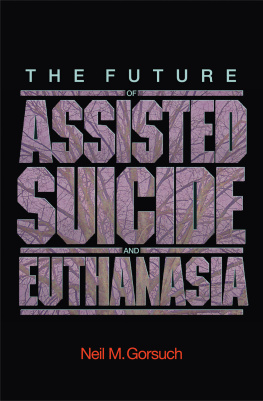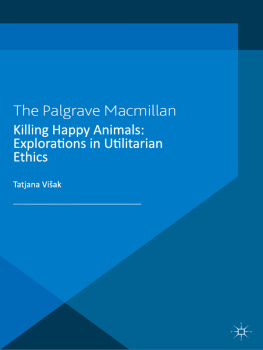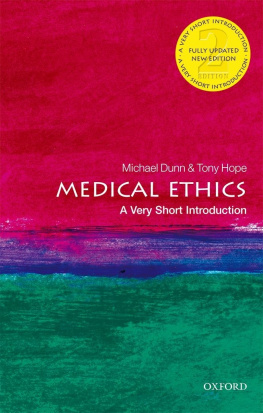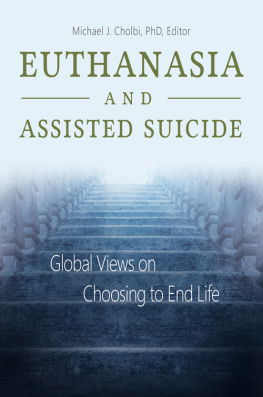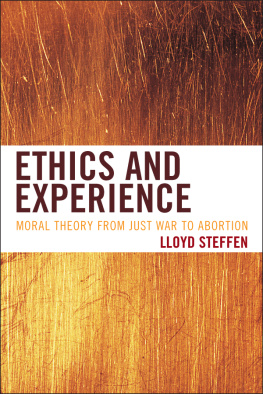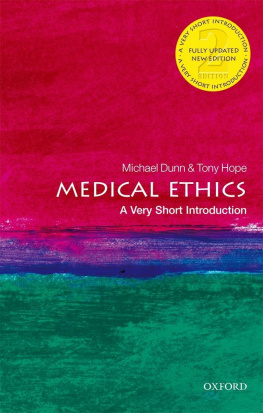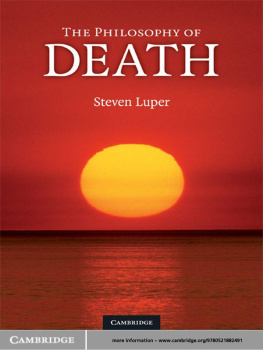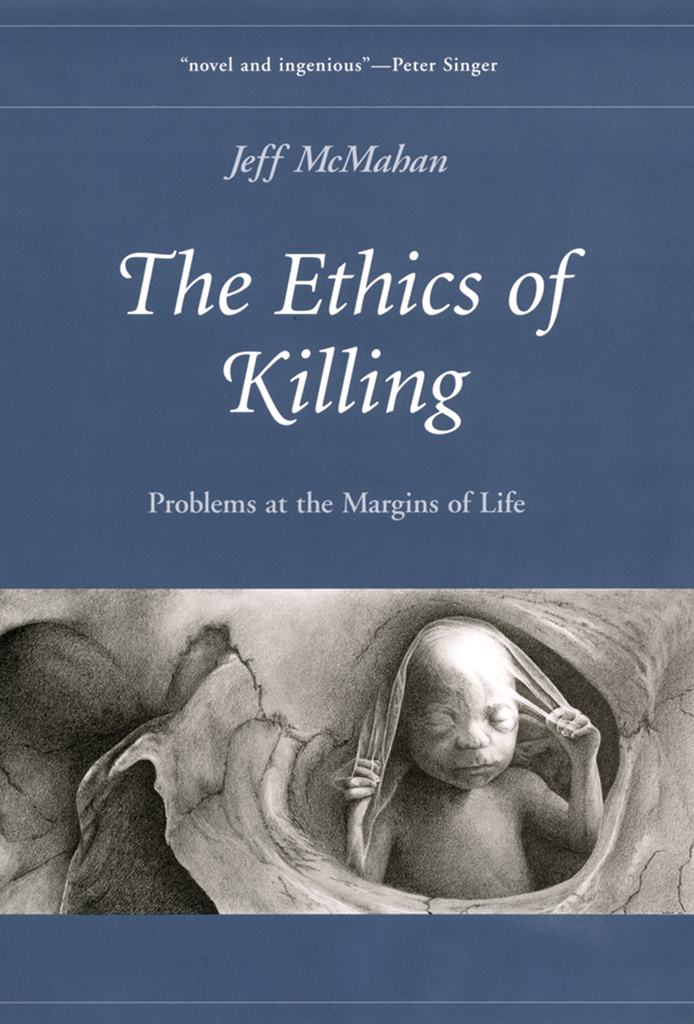THE ETHICS OF KILLING
PROBLEMS AT THE MARGINS OF LIFE
OXFORDETHICSSERIES
Series Editor: Derek Parfit, All Souls College, Oxford
The Limits of Morality
Shelly Kagan
Perfectionism
Thomas Hurka
Inequality
Larry S. Temkin
Morality, Mortality, Volume I
Death and Whom to Save from It
F. M. Kamm
Morality, Mortality, Volume II
Rights, Duties, and Status
F. M. Kamm
Suffering and Moral Responsibility
Jamie Mayerfeld
Moral Demands in Nonideal Theory
Liam B. Murphy
The Ethics of Killing
Problems at the Margins of Life
Jeff McMahan
THE ETHICS OF KILLING
PROBLEMS AT THE MARGINS OF LIFE
Jeff McMahan

2002

OxfordNew York
AthensAucklandBangkokBogotaBuenos AiresCape Town
ChennaiDar es SalaamDelhiFlorenceHong KongIstanbulKarachi
KolkataKuala LumpurMadridMelbourneMexico CityMumbaiNairobi
ParisSo PauloShanghaiSingaporeTaipeiTokyoTorontoWarsaw
and associated companies in
BerlinIbadan
Copyright 2002 by Jeff McMahan
Published by Oxford University Press, Inc.
198 Madison Avenue, New York, New York 10016
Oxford is a registered trademark of Oxford University Press
All rights reserved. No part of this publication may be reproduced, stored in a retrieval system, or transmitted, in any form or by any means, electronic, mechanical, photocopying, recording, or otherwise, without the prior permission of Oxford University Press.
Library of Congress Cataloging-in-Publication Data McMahan, Jeff.
The ethics of killing : problems at the margins of life / by Jeff McMahan.
p.cm.(Oxford ethics series)
Includes bibliographical references and index.
ISBN 0-19-507998-1
1. MurderMoral and ethical aspects. 2. AbortionMoral and ethical aspects. 3. Aged, Killing of theMoral and ethical aspects. 4. Insane, Killing of theMoral and ethical aspects. 5. EuthanasiaMoral and ethical aspects. I. Title. II. Series.
HV6515.M352001
179.7dc212001021768
For Sally, Sophie, and William
PREFACE AND ACKNOWLEDGMENTS
We all accept that killing is in general wrong, but virtually all of us also recognize certain exceptionsthat is, we concede that there can be instances in which killing is permissible. In addition to accepting the obvious permissibility of killing microbes and plants (except when this is objectionable for either instrumental or impersonal reasons), most people believe that it can be permissible in a variety of circumstances to kill animals, and also that it can be permissible to kill other human beings in selfdefense and in appropriate conditions in war.
There are four distinct categories into which we may sort most or all instances of killing for which there may be a reasonable justification. Perhaps the most contentious category consists of cases in which killing would simply promote the greater goodfor example, a case in which killing one person would prevent the killing, or the deaths, of a much greater number of people. Most people who believe that killing can on occasion be permissible for this sort of reason also believe that, in at least most of these instances, certain restrictions on agency have to be satisfiedfor example, that the killing must be a merely foreseen side effect rather than an intended means of achieving the greater good. Although it is important, I will not be concerned with this category of possibly justifiable killings.
The second category consists of cases in which an individual has done something that has lowered the moral barriers to harming him, or compromised his status as inviolable, or made him liable to action that might result in his death. Cases in which killing might be thought to be justified for this sort of reason include killing in selfdefense, killing in war, and killing as a mode of punishment. This range of cases will be the topic of another book, now in progress, that will be a companion volume to this one. This book, subtitled Problems at the Margins of Life, may thus be regarded as the first volume of a two-volume work on The Ethics of Killing, of which the second volume will be the projected book on self-defense, war, and capital punishment.
The third category of possibly permissible killing consists of cases in which the metaphysical or moral status of the individual killed is uncertain or controversial. Among those beings whose nature arguably entails a moral status inferior to our own are animals, human embryos and fetuses, newborn infants, anencephalic infants, congenitally severely retarded human beings, human beings who have suffered severe brain damage or dementia, and human beings who have become irreversibly comatose. These are all beings that are in one way or another at the margins. There are pressing moral questions about the permissibility, in certain circumstances, of killing individuals of these sorts, or of allowing them to die. Among the practices (whether actual or as yet hypothetical) that raise these questions are meat eating, animal
The fourth and final category comprises cases in which death would not be a harm to an individual but instead a benefit. In many such cases, the individual for whom death would be a benefit also desires to die and may request to be killed or helped to die. The practical issues that arise under this heading are suicide, assisted suicide, and euthanasia. Although my main focus in this book will be on the marginal cases, I will also discuss certain dimensions of the problems raised by the cases in this fourth category.
The practical issue that I will discuss at greatest length is abortion. As this manuscript is being completed (October 2000), it has been announced that the abortion pill is soon to be legally available in the United States. To many it may seem that this represents a decisive victory for those who favor the legal permissibility of abortion and that the practice of abortion will become socially invisible and thus eventually cease to be a matter of public controversy. It may therefore seem that to publish a book on abortion at this point is rather like writing on the morality of slavery, an issue that is now primarily of academic interest. But, although I defend the permissibility of abortion and thus welcome the introduction of the abortion pill, I do not believe the debate should end until we have the kind of intellectual and moral certainty about abortion that we have about slavery. It is important to notice that the ostensible victims of abortionfetusesare not parties to the debate, while of those who are involved in it, the only ones who have a significant personal interest or stake in the outcome are those who would benefit from the practice. There is therefore a danger that abortion could triumph in the political arena simply because it is favored by self-interest and opposed only by ideals. We should therefore be wary of the possibility of abortion becoming an unreflective practice, like meat eating, simply because it serves the interests of those who have the power to determine whether it is practiced. The arguments in the public debate that focus narrowly, and implausibly, on choice reveal a tendency to try to convert abortion from a question of ethics into a question of interests. This book, although it offers a novel, complex, and, I hope, plausible defense of the permissibility of abortion, nevertheless seeks to keep us focused on ethical rather than merely political considerations.


